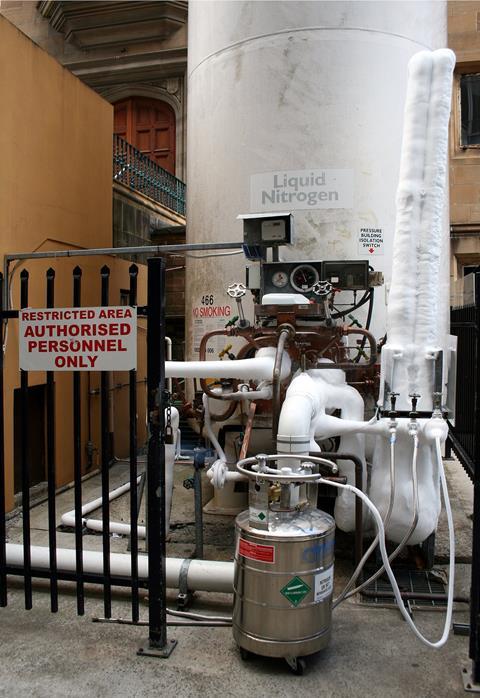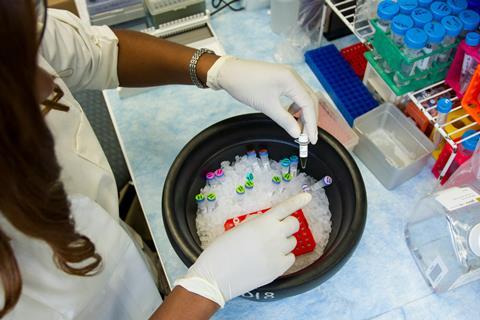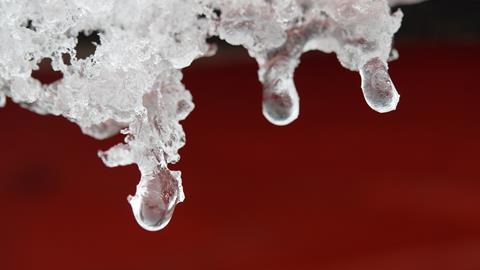Temperature fluctuation is one of the most significant drivers of sample degradation. Fortunately, it is largely preventable. How can laboratories mitigate this issue to protect their irreplaceable specimens from being compromised or destroyed?
The irreversible impact of temperature fluctuations
The Karolinska Institute — a prestigious medical university in Stockholm — recently lost three decades of research samples after its freezers malfunctioned over the holidays. An interruption in the liquid nitrogen supply that was supposed to house the specimens at -310˚ Fahrenheit left the 16 cryogenic tanks without adequate cooling.
While the tanks could withstand up to four days without additional liquid nitrogen, the university didn’t detect the malfunction until day five. Some estimates report it lost $47 million worth of samples. That being said, the true figure is likely inestimable, as the specimens were irreplaceable and were to be the subject of future studies.
As one of the world’s foremost medical research centers, the Karolinska Institute would’ve likely used those samples to make significant progress in the clinical microbiology field. Now, those researchers will have to spend years rebuilding what they lost in under a week because of a single freezer malfunction.
The impact of temperature variations on microbiological research cannot be overstated. Maintaining stability ensures professionals safeguard valuable assets, comply with stringent regulations, and ensure the accuracy of test results. Unfortunately, incidents resulting in eventual specimen degradation are all too common.

The importance of maintaining a stable temperature
Even minor temperature fluctuations can significantly impact microorganisms, affecting their activity, growth, stability, and survival. If a specimen passes a certain threshold, it becomes compromised and is no longer suitable for analyses because it would skew results. In other words, maintaining conditions is critical for the reliability of microbiological research.
According to the American Society for Microbiology, 45% of microbiology laboratories perform over 200,000 diagnostic tests annually, with responses ranging from under 5,000 to over 1,000,000. Every single one is vital for identifying, characterizing, and diagnosing diseases, so inaccurate findings cannot be tolerated.
In many cases, microbiological samples are irreplaceable, underscoring the importance of mitigating the effects of temperature variation. In situations like the one that occurred at the Karolinska Institute, maintaining stability would’ve been the difference between accelerating future research and starting from square one.

Common causes of temperature fluctuations in labs
Researchers can only prevent temperature fluctuations if they understand where the issue originates. Refrigerator, freezer, or incubator faults are some of the most common drivers, as anything from an improperly latched door to a hardware malfunction can result in a sudden spike or drop. In these cases, even temporary failures may be catastrophic.
Power outages account for a significant portion of failures, whether intentional or accidental. One well-documented incident on the matter involved a custodian who flipped the breaker to cease a freezer’s “annoying” beeping, resulting in a million-dollar lawsuit and the destruction of over two decades of research. Even though the outlet was locked, the electrical panel was not.
Improper sample storage during transport is another common cause of variations. Shipping biological products overseas is particularly challenging because they must remain stable — which often means below freezing — as they move through distribution centers and warehouses to reach their storage facility.
In the biopharma cold chain, vehicles and packaging are designed to be temperature-sensitive. However, factors like seasons, climate zones, and travel duration result in fluctuations, causing specimen degradation. For example, serum can ship at around 35˚-46˚ F if it arrives within one week. Longer periods require it to be kept at -4˚ F.
One largely underexplored source of variation is ambient temperature during sample collection. Temperature significantly affects 91.4% of assays, according to one study. If a room isn’t adequately climate-controlled during microbiological sampling, the resulting specimen may be somewhat compromised immediately.

How microbiological labs can mitigate these effects
Monitoring technologies should be a priority for any lab, as even a few hours without adequate conditions can compromise samples, resulting in unreliable test findings and a costly incident response. While many have systems that sound alarms when a pre-defined upper or lower threshold has been passed, these alerts are only useful when someone is present.
No one at the Karolinska Institute noticed the cryogenic tanks’ liquid cooling system had failed because it occurred over the holidays. If they had a remote monitoring system, they could have received an alert the moment the temperature began deviating from the acceptable range, near -310˚ F.
Several proof-of-concept systems already exist. In fact, one study demonstrated the efficacy of an Internet of Things monitoring system for overseas transportation, noting how it can provide multimodal warnings over email or text, regardless of the recipient’s time or location. If
the refrigerated container’s instant values approach a predefined temperature threshold, it sends an alert. Additionally, all data points can be archived, enabling a retrospective analysis.
Whether shipping frozen, refrigerated, or room-temperature specimens, the transporter must maintain a stable temperature. While dry ice is considered standard, it sublimates at a rate of 5-10 pounds per 24 hours. Whether by miscalculation or unanticipated external factors, an entire shipment could quickly degrade, which is why remote monitoring is vital.

Techniques to minimize sample temperature variations
Labs can leverage multiple techniques to mitigate temperature variations. Thermal insulation is one of the most cost-effective, as numerous options exist. Reducing heat exchange is crucial for maintaining conditions during transportation and safeguarding specimens stored near heat sources or without climate control.
Power redundancy is also an effective strategy, as it can prevent catastrophic degradation in the event of equipment failure. Labs should have backup power options — generators, solar panels, or battery systems — that can come on automatically in these situations. Installation may be expensive, but it is typically worth the investment for mid to large-sized labs.
Alternatively, researchers can leverage planned or predictive maintenance instead of existing reactive strategies. Periodically ensuring critical equipment is in working order may take time — and a considerable investment if specialist technicians are required — but it can identify operational anomalies to prevent equipment breakdowns before they occur.
Safeguarding specimens requires an ongoing effort
Researchers, students, and professionals in the microbiology field mustn’t underestimate the impact of temperature variations on sampling and specimen storage. Their diligence and awareness could mark the difference between a catastrophic loss and a temporary issue.








No comments yet